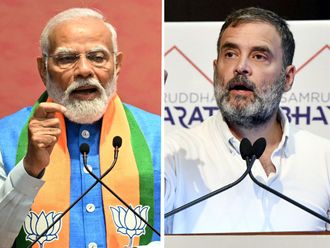People sometimes ask, “What were you doing in ...?” And they name a year. To be honest, if I can remember what I was doing yesterday it would constitute a major victory in ‘memory recall’ but having said that, I’m going to ask, “What were you doing in 2008?”
It was only a decade ago, China hosted the Olympic Games; Cyprus and Malta adopted the euro; May was a bad month because a Chilean volcano entered an ‘eruptive phase’ for the first time since 1640; cyclone Nargis devastated Myanmar accounting for 138,000 deaths; a 7.9 magnitude earthquake in Sichuan left 87,000 dead. Two small Himalayan countries added their names to the year’s highlights: Bhutan held its first-ever general election while in Nepal, parliament voted to abolish the 240-year-old monarchy, making the country a republic. Kamal Nepali was only 12 years old at the time, and he probably had no idea that great challenges and even greater recognition lay ahead. Aradhana Pradhan was even younger — two years old — and she, in her infant’s mind would have had no idea how indebted her life would be to a stranger.
2008 was the year little Aradhana fell 20 metres — 60 feet — into a deep gorge, one of many cut by the river Seti as it flowed through the Annapurna region and the tourist town of Pokhra. Not many two-years-olds would survive a fall so great, but her baby cries could be heard and rescuers rushed to the fore. Every effort was expended but in the end it was decided that the crevices were simply too narrow to permit a rescue team to descend. Twenty-odd hours later, those on the perimeter hoping for a miracle heard a sound they really didn’t wish to hear: No sound at all, that is. The toddler had stopped crying.
Research doesn’t tell me what kind of day it was, what sort of weather conditions prevailed. But it’s not hard to guess the mood that must have prevailed around the edge of the narrow gorge.
I have once seen a baby myna, too young to fly, fall out of its nest and lie helpless on the ground while its mother perched and paced restlessly beside it, helpless apart from making traumatised myna sounds. One rescuer who was able to venture down the gorge the furthest (25 feet) sadly could proceed no further.
Leaving a toddler to perish
In despair he went home but felt he had to return and when he did he was accompanied by his little brother, Kamal. I can only imagine the burden of decision-making that ensued when little Kamal volunteered to try and go down while nearly all of the adult rescuers who’d tried and failed counselled that he absolutely shouldn’t. On the other hand, how difficult is it to leave a toddler to perish when you know there can be one last chance at saving her?
It’s never easy to turn one’s back and walk away in such instances. So the adult rescuers decided they’d accept Kamal’s offer and lower him into the crevice. And he managed to worm his way past and into the gorge of total darkness, relying only on a walkie talkie. Thirty minutes later, he emerged with a bag slung on his back, bearing young Aradhana.
If 2008 needed a hero this was him. Kamal Nepali. Today, he must be 22 years of age. Where has his life taken him since that fateful day? What is he doing? His courage sets a standard that needs to be saluted and aspired to.
It isn’t always in the fire of the furnace or the maelstrom of the oceans that heroism is born. Sometimes it emerges from the depths of a daunting, pitch-black gorge. And it may wear the face of a child. Here’s hoping 2019 will be worth remembering for all the right reasons.
Kevin Martin is a journalist based in Sydney, Australia.





_resources1_16a31069e4e_small.jpg)






